CoA stands for CoA Certificate of Analysis. Data listed on the CoA were determined for the actual batch.
The purity determined by (analytical) HPLC (%) using UV detection corresponds to the percentage of requested peptide in relation to the total amount of material absorbing at 220 nm i.e. the desired product, peptidic by-products and other impurities.
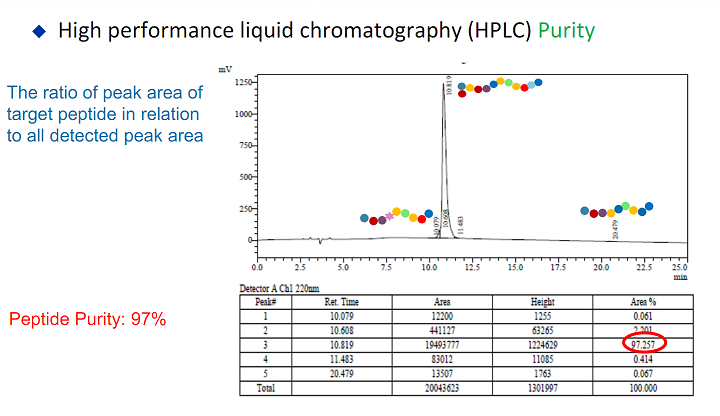
The constituents of the delivered peptide?
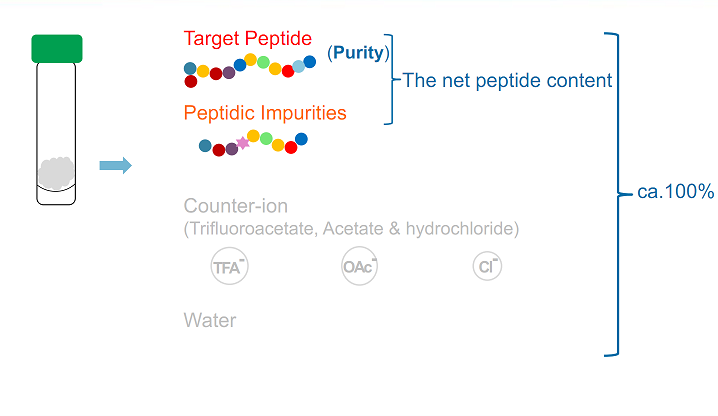
The gross weight of a peptide sample comprises the weight of the peptide, counter-ions, and adhered water.
What does net peptide content mean?
The net peptide content (NPC) is the fraction of peptidic material (i.e. the requested peptide and the peptidic impurities) relative to counter-ions and residual water. The latter do not contain nitrogen, allowing the determination of the net peptide content by elemental analysis. Additionally, the NPC can be determined by amino acid analysis.
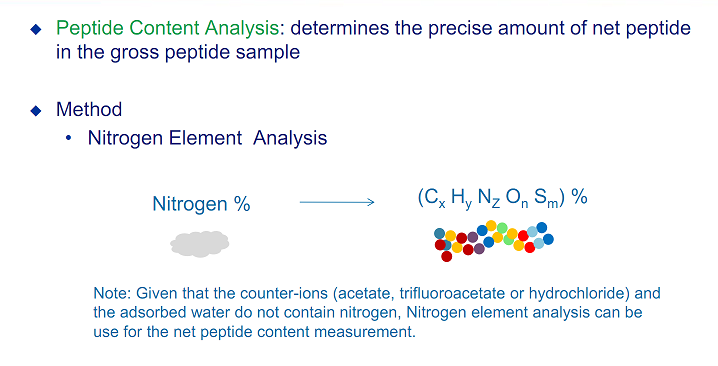
How to calculate the net weight?
Net weight = Gross weight x Net peptide content (NPC) / 100
An example: NPC 85%,1 mg (gross ) = 0.85 mg (net)
A relatively low peptide content can be expected when a peptide contains a large proportion of basic amino acids, especially arginines.
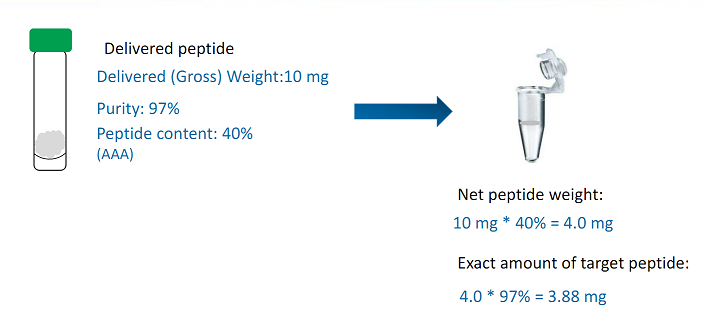
How to calculate the molarity of a peptide solution?
The peptidic impurities and the net peptide content (NPC) have to be taken into account, e.g. for calculating the amount of solvent required for preparing a solution of a given concentration. The proportion of peptidic contaminants can be determined by analytical HPLC. The HPLC-purity corresponds to the fraction of the desired sequence, the lowest value mentioned on the ADS should be used for calculating the molar content:
Molar amount of desired peptide =
Gross weight x NPC (%) x HPLC-purity (%) / Mol. weight x 10’000
An example: Bradykinin acetate salt, gross weight 5 mg
HPLC-purity 98.7%, NPC (“Assay”) 85.0%, Mol. weight 1060.22 g/mol → net 4.195 mg (3.956 µmol)
This value allows calculating concentrations, when dissolving the peptide.
Other constituents in your sample?
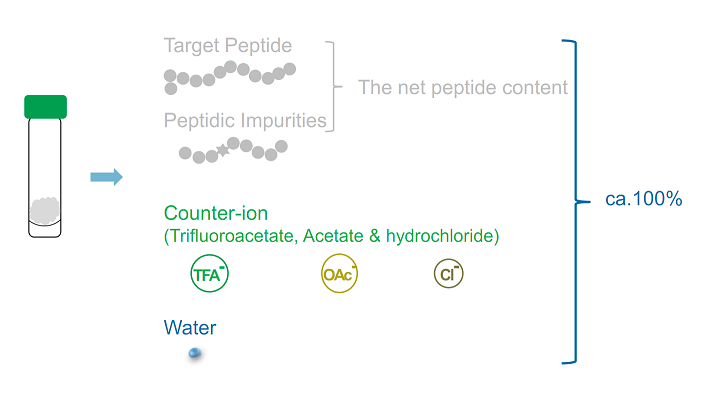
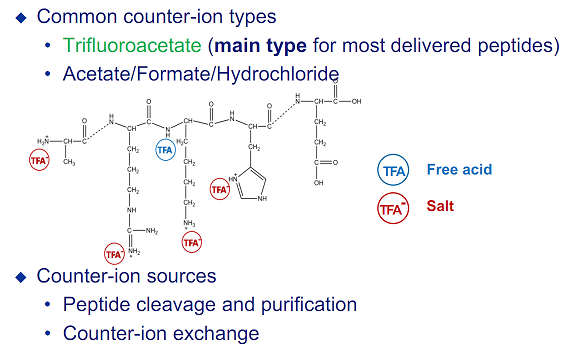
How can I estimate the theoretical TFA amount?
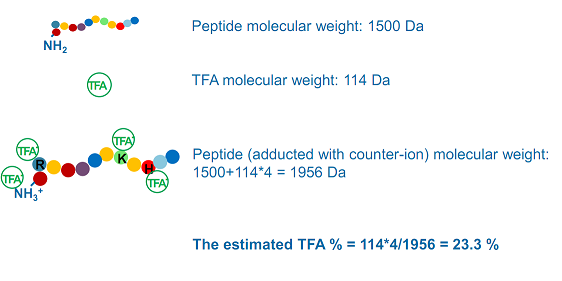
What are the remaining peptidic impurities?
Not all impurities can be removed by a single preparative RP-HPLC run. Usually a few peptidic contaminants remain, mostly deletion sequences (peptides lacking one or more amino acids of the target sequence). Such by-products differ only slightly in polarity, hence their removal may fail.
Truncation sequences (which may be generated deliberately by capping steps to avoid the formation of deletion peptides), incompletely deprotected peptides and by-products generated during the synthesis or during the final cleavage may also be found among the impurities.
How do you obtain your mass spectra?
By ESI-MS. Additionally, MALDI-TOF and Q-TOF are routinely used.
How do you perform an amino acid analysis (AAA)?
Amino acid analysis (AAA) is performed by liquid-phase hydrolysis of the peptide with constant-boiling hydrochloric acid (6N HCl) followed by pre-column derivatization of the free amino acids. The derivatized amino acids are separated by RP-HPLC. Integration of the individual peaks allows the determination of the amino acid composition of the peptide hydrolysate. However, the indole moiety of Trp is destroyed during hydrolysis; the side-chain amide groups of Asn and Gln and the lactam cycle of Pyr, will be hydrolyzed yielding Asp and Glu, respectively. Hence, these amino acids are listed as Asx and Glx in the AAA result.
Do you perform assays in-house with the substrates you offer?
Our substrates are tested only by chemical methods.
Do you test the biological activity of your peptides?
We characterize our peptides only by chemical means.
How to prepare a peptide solution of defined molar concentration?
The peptidic impurities and the net peptide content (NPC) have to be taken into account, e.g. for calculating the amount of solvent required for preparing a solution of a given concentration. The proportion of peptidic contaminants can be determined by analytical HPLC. The HPLC-purity corresponds to the fraction of the desired sequence, the lowest value mentioned on the ADS should be used for calculating the molar content:
Molar amount of desired peptide =
Gross weight x NPC (%) x HPLC-purity (%) / Mol. weight x 10’000
An example: Bradykinin acetate salt, gross weight 5 mg
HPLC-purity 98.7%, NPC (“Assay”) 85.0%, Mol. weight 1060.22 g/mol → net 4.195 mg (3.956 µmol)
This value allows calculating the amount of solvent required for obtaining a given concentration.
Souce: NovoPro 2018-01-24
